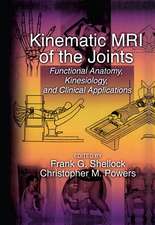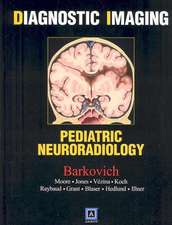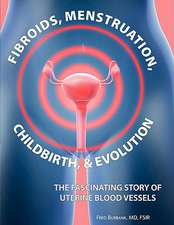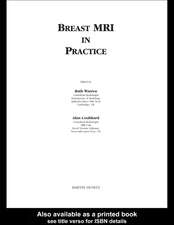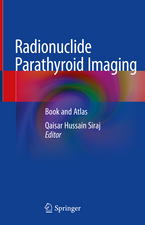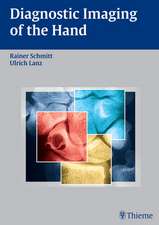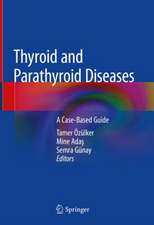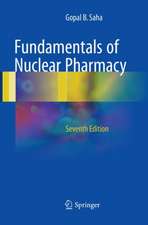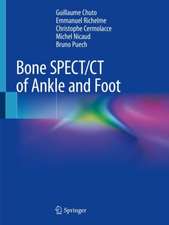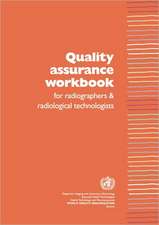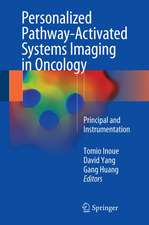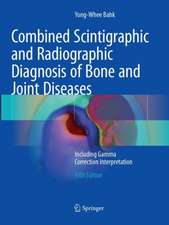Radiopharmaceuticals: A Guide to PET/CT and PET/MRI
Editat de Ferdinando Calabria, Orazio Schillacien Limba Engleză Hardback – 25 oct 2019
In the editors’ experience, students in medicine and residents in nuclear medicine and radiology have limited access to scientific papers concerning novel PET tracers. Moreover, these papers generally focus on a single PET radiopharmaceutical. With approx. 20 radiopharmaceuticals explained in detail and a wealth of images and clinical cases, the book represents a versatile, comprehensive and practice-oriented guide to PET imaging, pursuing a unique andnovel approach to the clinical role of PET tracers.
The book’s didactic nature also makes it an invaluable tool for residents in nuclear medicine and radiology, as well as for radiographers and clinicians in radiotherapy, oncology, hematology, cardiology and neurology.
| Toate formatele și edițiile | Preț | Express |
|---|---|---|
| Paperback (1) | 557.38 lei 38-45 zile | |
| Springer International Publishing – 25 oct 2020 | 557.38 lei 38-45 zile | |
| Hardback (2) | 786.89 lei 38-45 zile | |
| Springer Nature Switzerland – 17 oct 2024 | 1050.55 lei 3-5 săpt. | |
| Springer International Publishing – 25 oct 2019 | 786.89 lei 38-45 zile |
Preț: 786.89 lei
Preț vechi: 828.30 lei
-5% Nou
Puncte Express: 1180
Preț estimativ în valută:
150.57€ • 157.21$ • 124.62£
150.57€ • 157.21$ • 124.62£
Carte tipărită la comandă
Livrare economică 31 martie-07 aprilie
Preluare comenzi: 021 569.72.76
Specificații
ISBN-13: 9783030277789
ISBN-10: 303027778X
Pagini: 234
Ilustrații: XII, 234 p. 193 illus., 184 illus. in color.
Dimensiuni: 178 x 254 mm
Ediția:2nd ed. 2020
Editura: Springer International Publishing
Colecția Springer
Locul publicării:Cham, Switzerland
ISBN-10: 303027778X
Pagini: 234
Ilustrații: XII, 234 p. 193 illus., 184 illus. in color.
Dimensiuni: 178 x 254 mm
Ediția:2nd ed. 2020
Editura: Springer International Publishing
Colecția Springer
Locul publicării:Cham, Switzerland
Cuprins
18F-FDG.- 18F-DOPA.- The lipogenesis pathway: radiolabeled choline.- 18F-FET.- 18F-NaF.- The Somatostatin Receptors Analogues (68Ga-DOTATOC, 68Ga-DOTANOC, 68Ga-DOTATATE).- 64Cu-radiopharmaceuticals.- Amyloid Imaging.- PET myocardial perfusion imaging: 82Rb.- The bone pathway: 223Ra-dichloride.- 11C-methionine.- 68Ga-PSMA.- PET biomarkers for tau pathology.
Notă biografică
Dr. Ferdinando Calabria graduated with a degree in Medicine in 2005 and specialized in Nuclear Medicine in 2009 at the University of Rome “Tor Vergata.” As a resident in Nuclear Medicine, he began studying the molecular pathways of new PET radiopharmaceuticals. His specific scientific interest was in deepening our knowledge of the physio-pathological features of PET radiopharmaceuticals bio-distribution in order to verify further diagnostic applications. Another topic during this period was the evaluation of the potential added value of rising hybrid imaging with SPECT/CT and PET/CT scanners. Since 2010 he has led the Department of Nuclear Medicine at Neuromed Research Institute, where he has focused on prostate cancer imaging with 18F-choline PET/CT and brain tumor imaging with 18F-DOPA PET/CT. In 2015 his scientific interest shifted to the imaging of the brain, working on a hybrid PET/MRI 3T scanner installed at the Italian National Research Council. Here, he started developing an interest in applying 18F-FDG PET/MRI for patients with neurodegenerative diseases and 18F-FET for neuro-oncology, using a multidisciplinary network approach. He is currently exploring the role of advanced hybrid imaging with SPECT/CT and PET/CT in oncological patients, at the national public Hospital “Mariano Santo” in southern Italy. The author of over 40 scientific papers listed in PubMed, he has also served as a reviewer for the major specialized scientific journals of nuclear medicine.Prof. Orazio Schillaci graduated with a degree in Medicine in 1990 and specialized in Nuclear Medicine in 19942 at the University of Rome “La Sapienza.” He began his scientific work at the University of L’Aquila: during this important period, Schillaci started exploring molecular imaging, with an emphasis on SPECT for neuroendocrine tumors. After a research stay in California, USA, he became a Professor of Nuclear Medicine at the University of Rome “Tor Vergata” in 2001. Since 2008 he has led the School of Specialization in Nuclear Medicine and, since 2013, has been Director of the School Of Medicine at the “Tor Vergata” University Hospital in Rome. The author of more than 220 scientific articles listed in PubMed, his current research interest is in the development of novel PET radiopharmaceuticals and their potential clinical applications in oncology, neurology, cardiology and infectious disease, within a network involving several Italian and European institutions. Most recently, he became President of the Italian Association of Nuclear Medicine (AIMN).
Textul de pe ultima copertă
This book provides a rapid and concise guide to PET (PET/CT and PET/MRI) molecular imaging, concentrating extensive information on PET radiopharmaceuticals in a single volume.
The book reflects the rapid development of several PET tracers over the last decade, as a result of which the “traditional” PET/CT with 18F-FDG, the “cornerstone” of PET imaging, is now only one of several available options, which use different tracers for different diseases. For the same reason, PET imaging is no longer limited to the field of oncology.
In the editors’ experience, students in medicine and residents in nuclear medicine and radiology have limited access to scientific papers concerning novel PET tracers. Moreover, these papers generally focus on a single PET radiopharmaceutical. With approx. 20 radiopharmaceuticals explained in detail and a wealth of images and clinical cases, the book represents a versatile, comprehensive and practice-oriented guide to PET imaging, pursuing a unique and novel approach to the clinical role of PET tracers.
The book’s didactic nature also makes it an invaluable tool for residents in nuclear medicine and radiology, as well as for radiographers and clinicians in radiotherapy, oncology, hematology, cardiology and neurology.
In the editors’ experience, students in medicine and residents in nuclear medicine and radiology have limited access to scientific papers concerning novel PET tracers. Moreover, these papers generally focus on a single PET radiopharmaceutical. With approx. 20 radiopharmaceuticals explained in detail and a wealth of images and clinical cases, the book represents a versatile, comprehensive and practice-oriented guide to PET imaging, pursuing a unique and novel approach to the clinical role of PET tracers.
The book’s didactic nature also makes it an invaluable tool for residents in nuclear medicine and radiology, as well as for radiographers and clinicians in radiotherapy, oncology, hematology, cardiology and neurology.
Caracteristici
Highlights the crucial role of novel PET radiopharmaceuticals in the clinical usefulness of PET Features approx. 20 radiopharmaceuticals and their role in clinics PET/CT acquisition protocols, specific to each tracer, are presented in each chapter Provides over 50 multi-imaging figures (contrast enhanced CT and/or PET/CT and/or SPECT and/or PET/MRI and/or MRI) Presents numerous clinical cases, with multi-tracer evaluation in a single patient, revealing mismatches or diagnostic overlap

